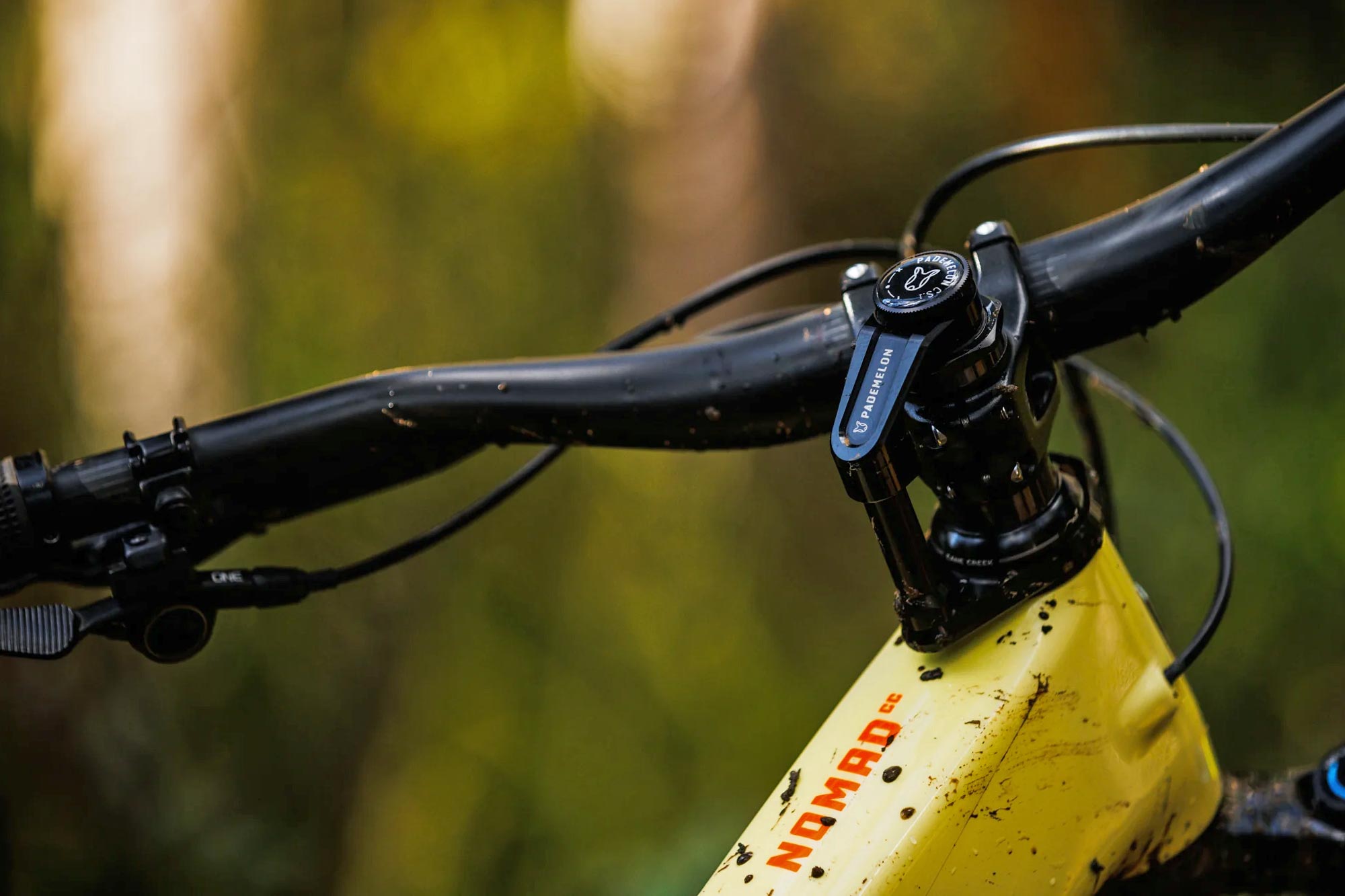Australian startup Pademelon reanimates the steering damper concept with a new, sophisticated CS.1 hydraulic damper offering more compatibility, plus wide user-adjustability to fine-tune trail stability. This new steering damper takes decades-old Hopey tech and modernizes with position-sensitive damping that only stabilizes steering when you need it, allows navigation of steep turns without resistance, and lets you fine-tune just how much damping tension is preferred for your individual style of riding…
Pademelon CS.1 smart, adjustable hydraulic steering damper
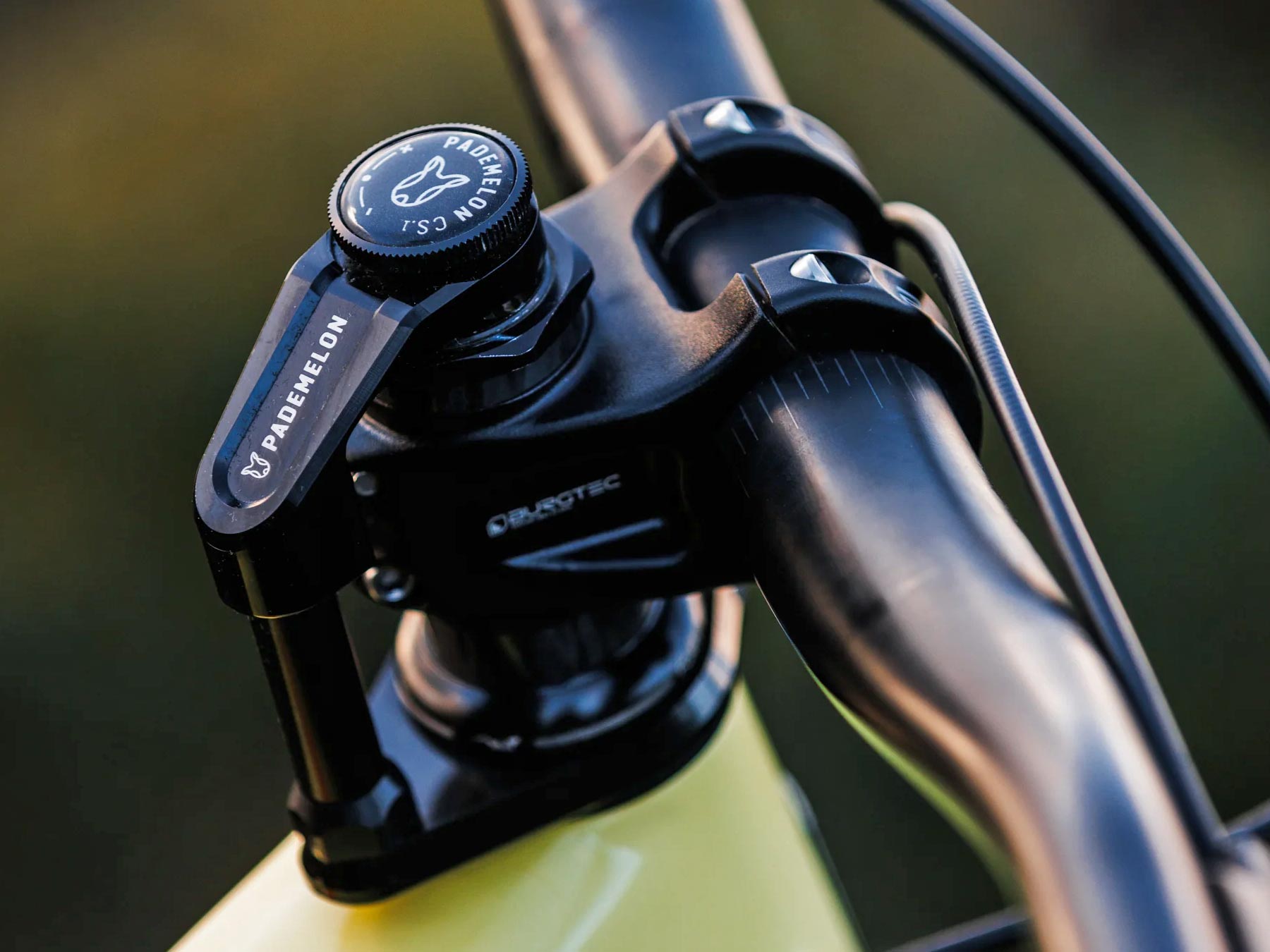
The new Pademelon CS.1 steering damper promises to stabilize your handlebar, so wheel impacts and shifts in balance or rider input don’t know your steering off track.
“Imperfections are everywhere on the trail – in line choice, during pedaling, or in the grip of fatigue.“
The general steering damper concept is simple – by filtering out irregular or unexpected steering inputs, the device helps keep your bar straight, and your bike headed in the right direction. But at the same time, direct and intentional steering inputs are still possible to change direction when you want it.
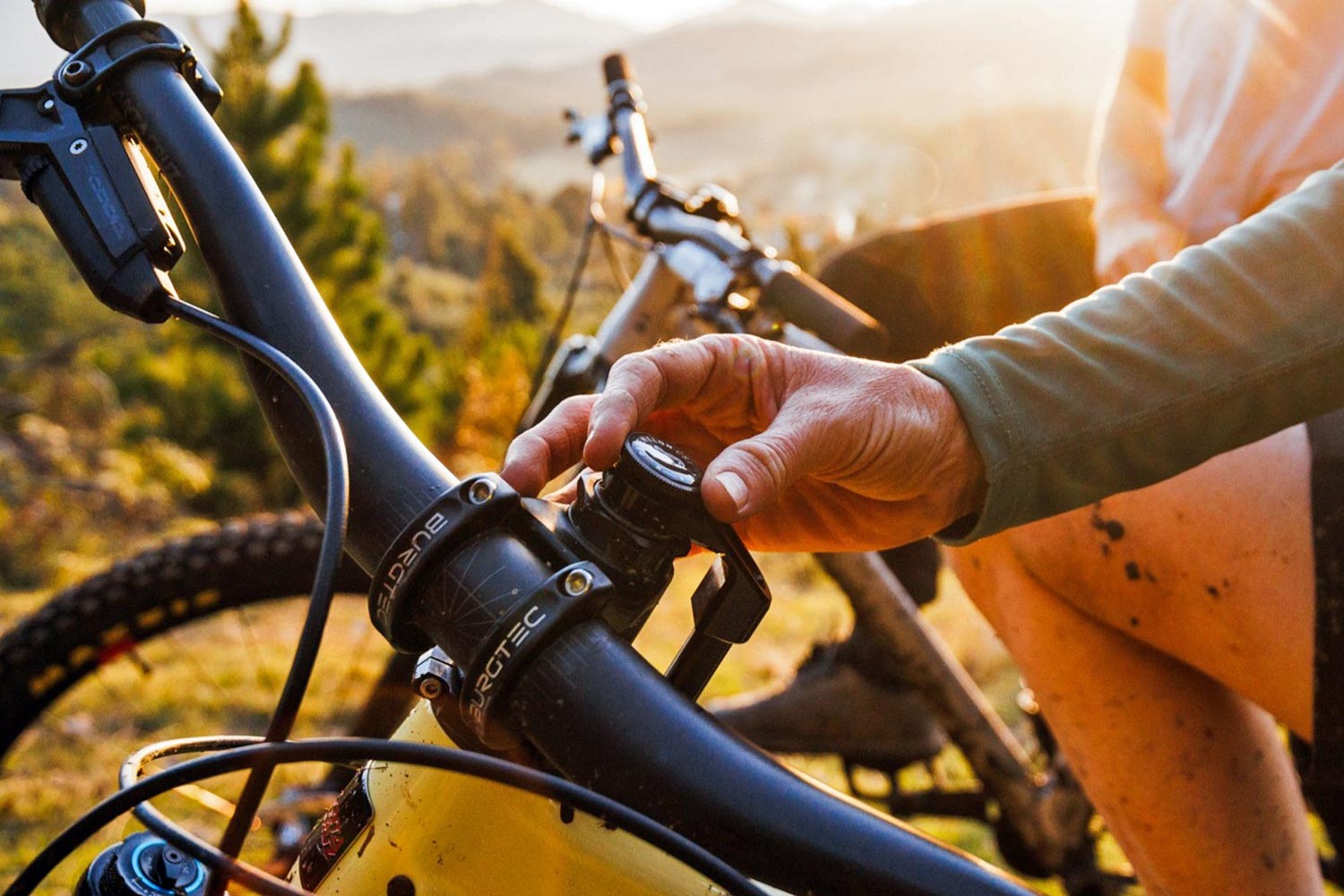
Whether to help you maintain your line riding downhill over rough terrain, or to keep your front wheel from drifting off track on steep climbs.
Interestingly, we’ve seen a recent boost in discussions on steering dampers with the advent of the Syntace/Canyon/Liteville K.I.S. system. KIS isn’t really a damper, but offers a different solution for assisted straightening of your bar. Most recently, Canyon decided that every new Spectral trail bike would include the stabilizer, and looks to put KIS on more bikes in the near future.
Hopey history

Those who know about Tim Hopey and his hydraulic steering damper will remember that it had its fervent fans for two and a half decades – from DH racers to tandem riders to triathletes, ultra-endurance racers, and especially those with otherwise limiting physical disabilities. But having not seen any real update in a decade since their DH-specific damper, and really having the same core design for more than 24 years, Hopey officially closed its doors at the start of this year. At that time Hopey directed bicycle steering damper fans to Pademelon, who was still only working on their new damper.
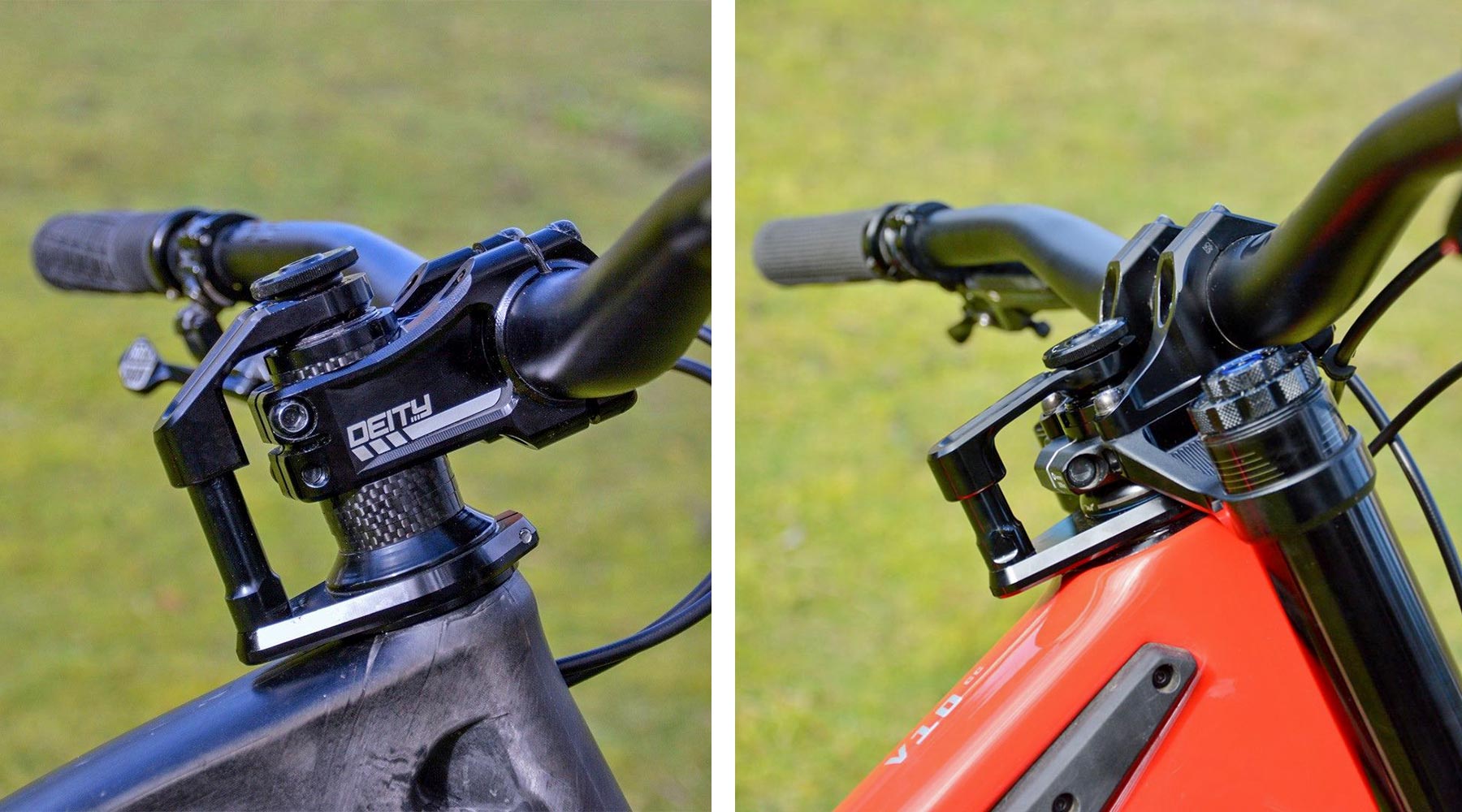
Founded by longtime bike industry veteran Jeremiah Boobar – who we’ve known from his suspension development roles at Cannondale & SRAM/RockShox for more than 20 years – Pademelon has been a long-running passion project, now finally made real. Boobar knew he could improve on the Hopey design, and now has finally released his reimagined steering damper.
So, what are the key features of the new damper?
This Pademelon CS.1 essentially updates the long-running Hopey hydraulic damper design with “improved robustness and consistency of the damper, as well as more mounting options to fit modern bikes.”
Position-Sensitive Damping
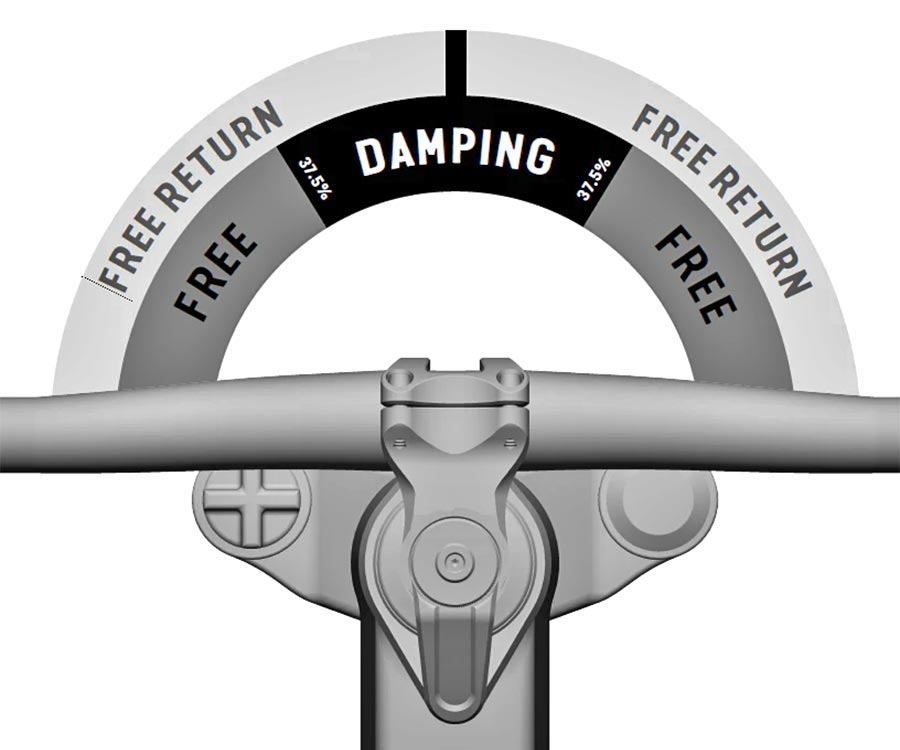
First tech-wise, the CS (Constant Stability) 1 damper features position-sensitive damping. That means that it delivers the same level of stabilizing impact damping in the middle 70° of steering (35° to the left, plus 35° to the right), while having no damping effect from 35° to 90° in either direction.
That ensures that unwanted steering influences are filtered out while you are trying to ride straight ahead, or slightly turning. But when turning the bars a steeper angle to navigate tight turns at slow speeds, there is no damping resistance to fight against. Then, the damping resistance doesn’t reengage until you get back to center, so it’s smooth and easy to come out of those tighter turns and get back on track.
User-Adjustable Damping Support
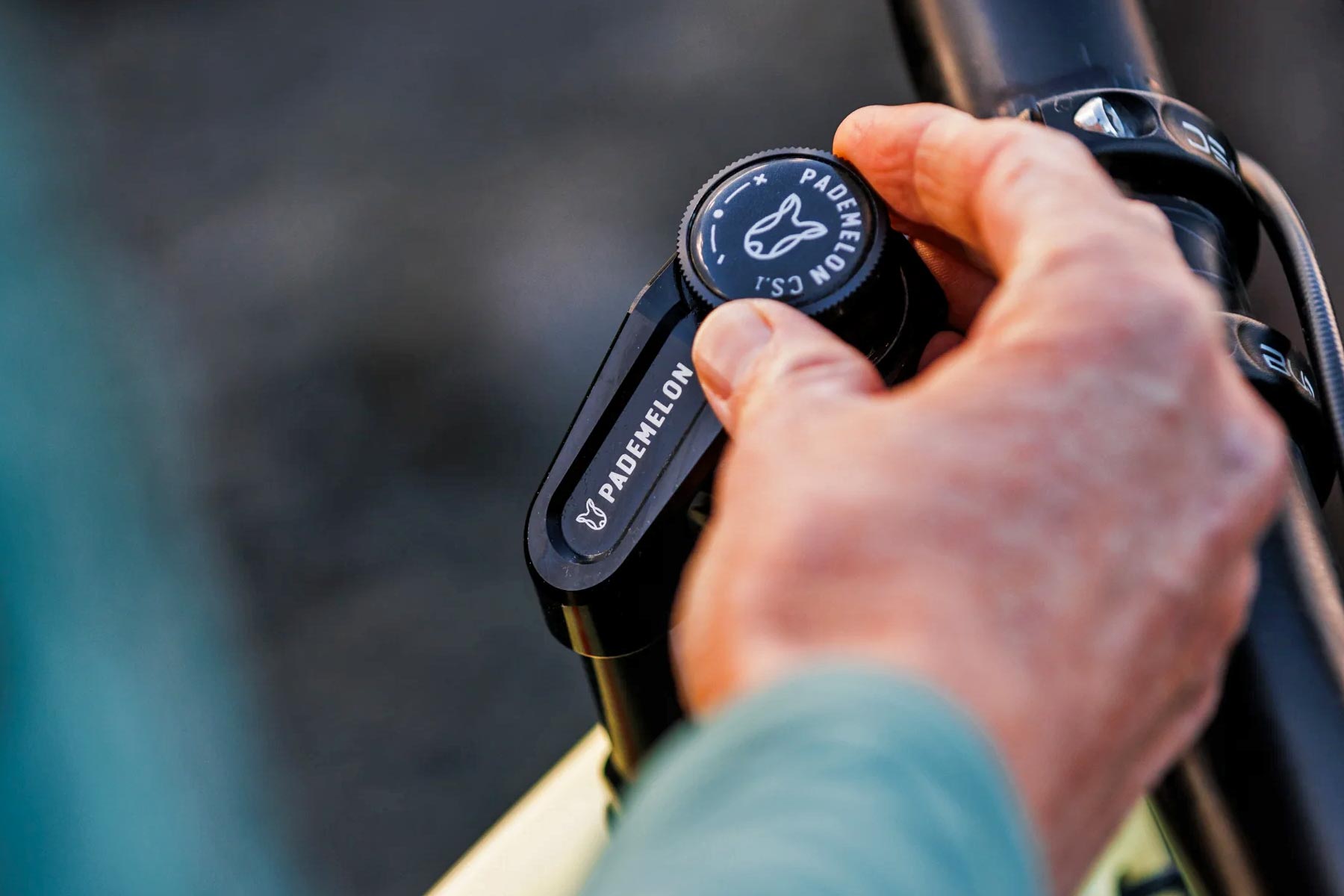
The other update is more precise fine-tuning control over how much resistance the damper imparts on your steering. With a few rotations of the simple knob on top, the rider can adjust from almost no damping to a high level, far beyond what most riders will want.
How does it work?
The Pademelon damper works by replacing your upper headset cup with a fixed lower plate, pressed into your frame. Then, the damper body itself slips into your steerer tube, replacing the starnut. An arm extends from the damper body, out around your stem, and connects to a post extending up from the base plate. (There is a solution for traditional press-in headset cups, for zero stack (ZS) headsets, and even integrated (IS) headsets that just drop the upper bearing directly into your frame.)
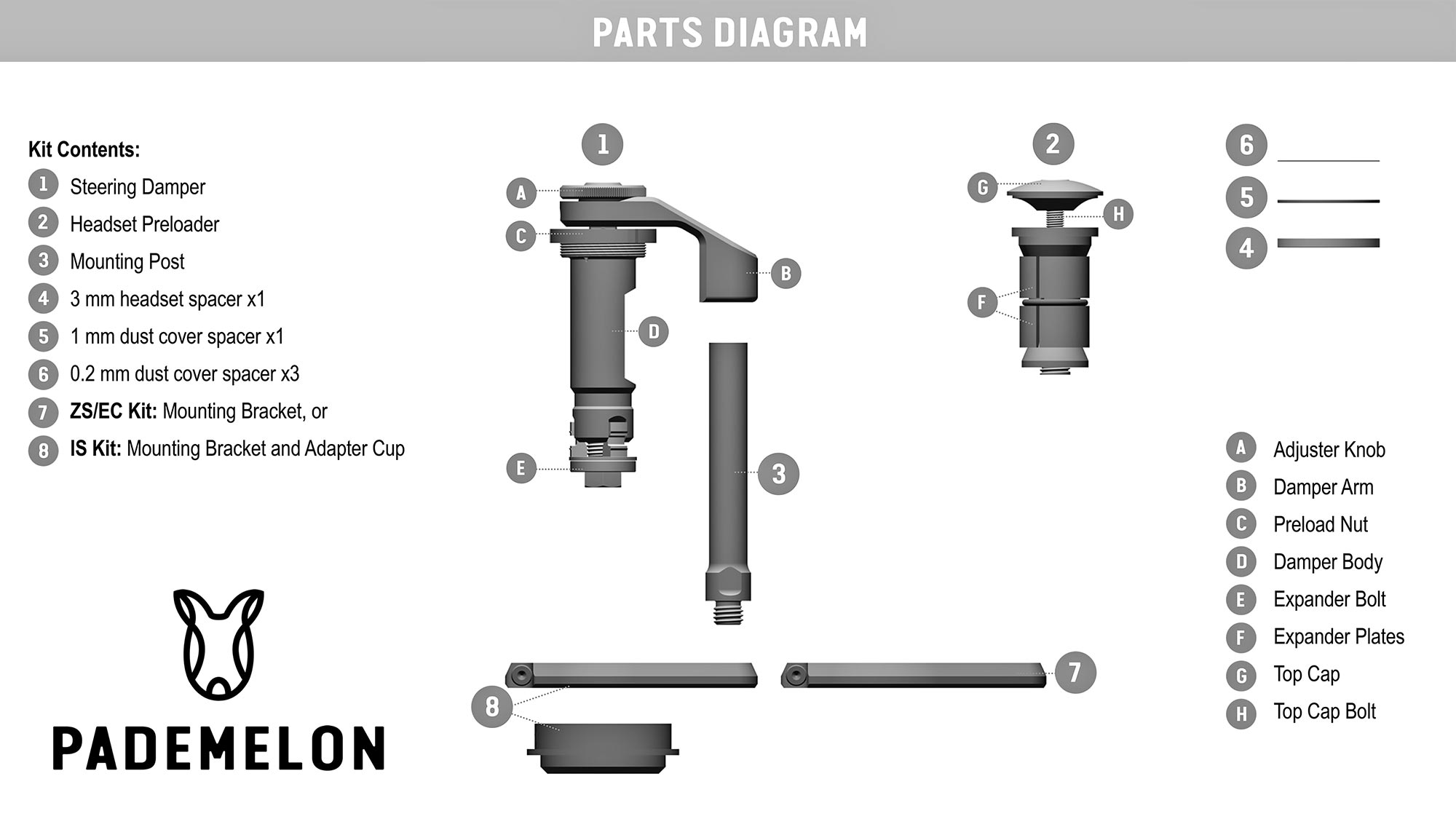
That connects the damper to the fork steerer from the inside, and to your frame under the headset. As you rotate the bar away from the centerline of the frame, the device’s arm twists the internal mechanism of the damper cartridge. And the CS.1 resists that input, whether it is coming from the rider through the bar, or irregularities at the front tire through the fork.
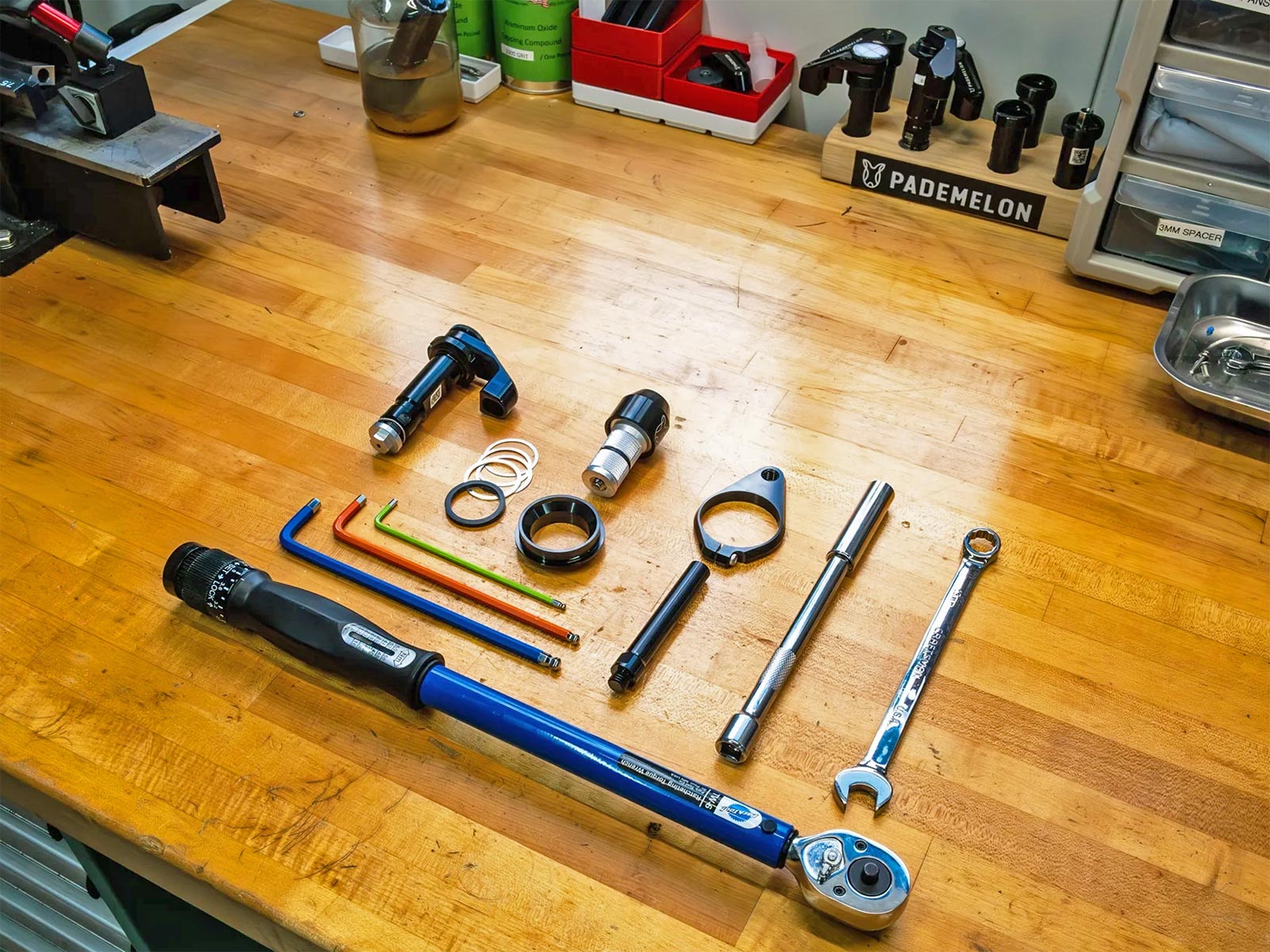
Pademelon doesn’t elaborate on the mechanics or hydraulics that go on inside its damper body to make it work. But suffice it to say, it is the controlled movement of oil inside the sealed hydraulic cartridge through damping circuits, not so dissimilar to what happened inside your fork or shock. Pademelon does say that it does not require complex servicing. So it is likely well-sealed and will offer many years/seasons of steering damping smoothness.
Pademelon CS.1 steering damper – Pricing, options & availability
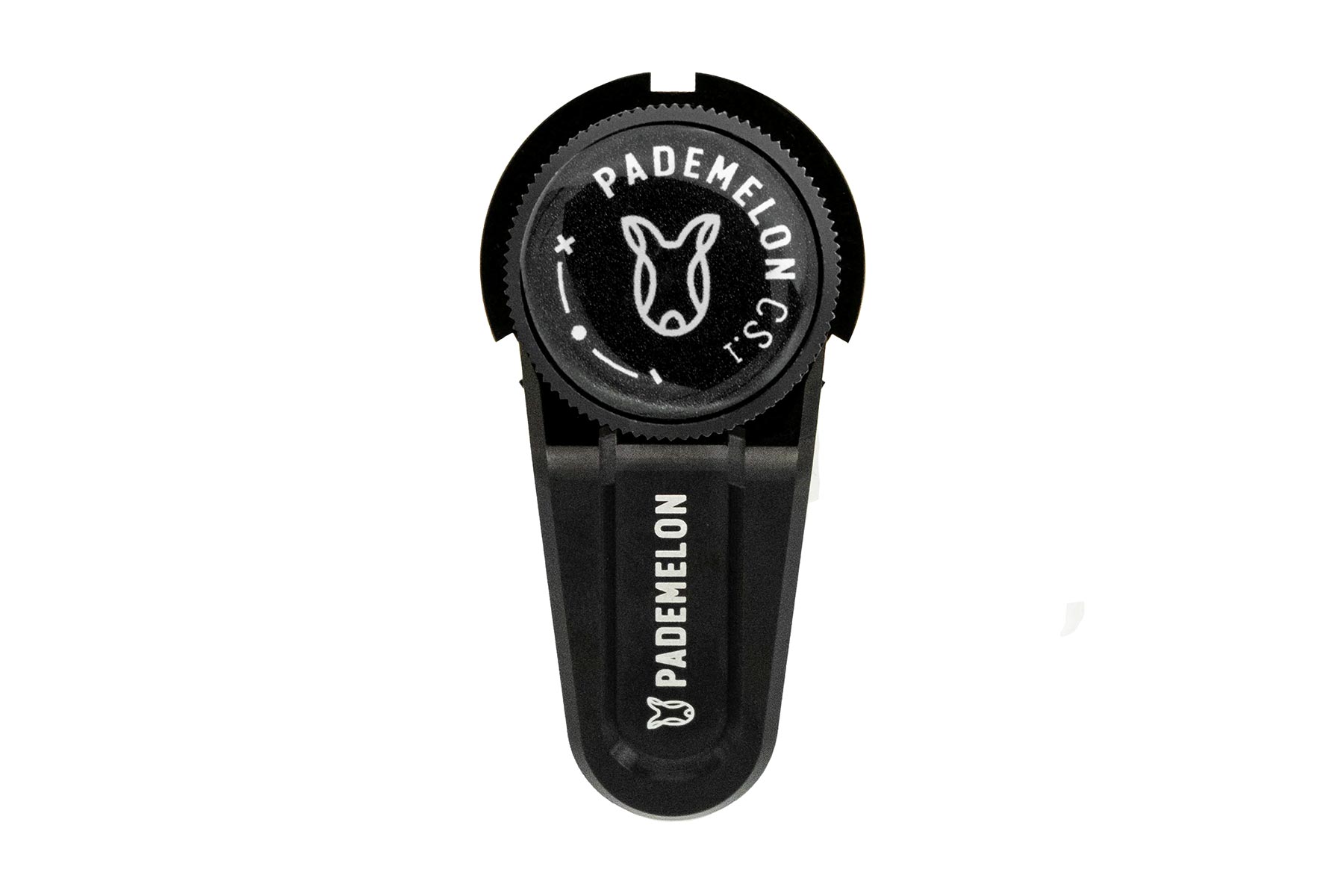
The Pademelon CS.1 steering damper doesn’t come cheap, but it does promise a smoother ride, improved traction, and reduced fatigue.
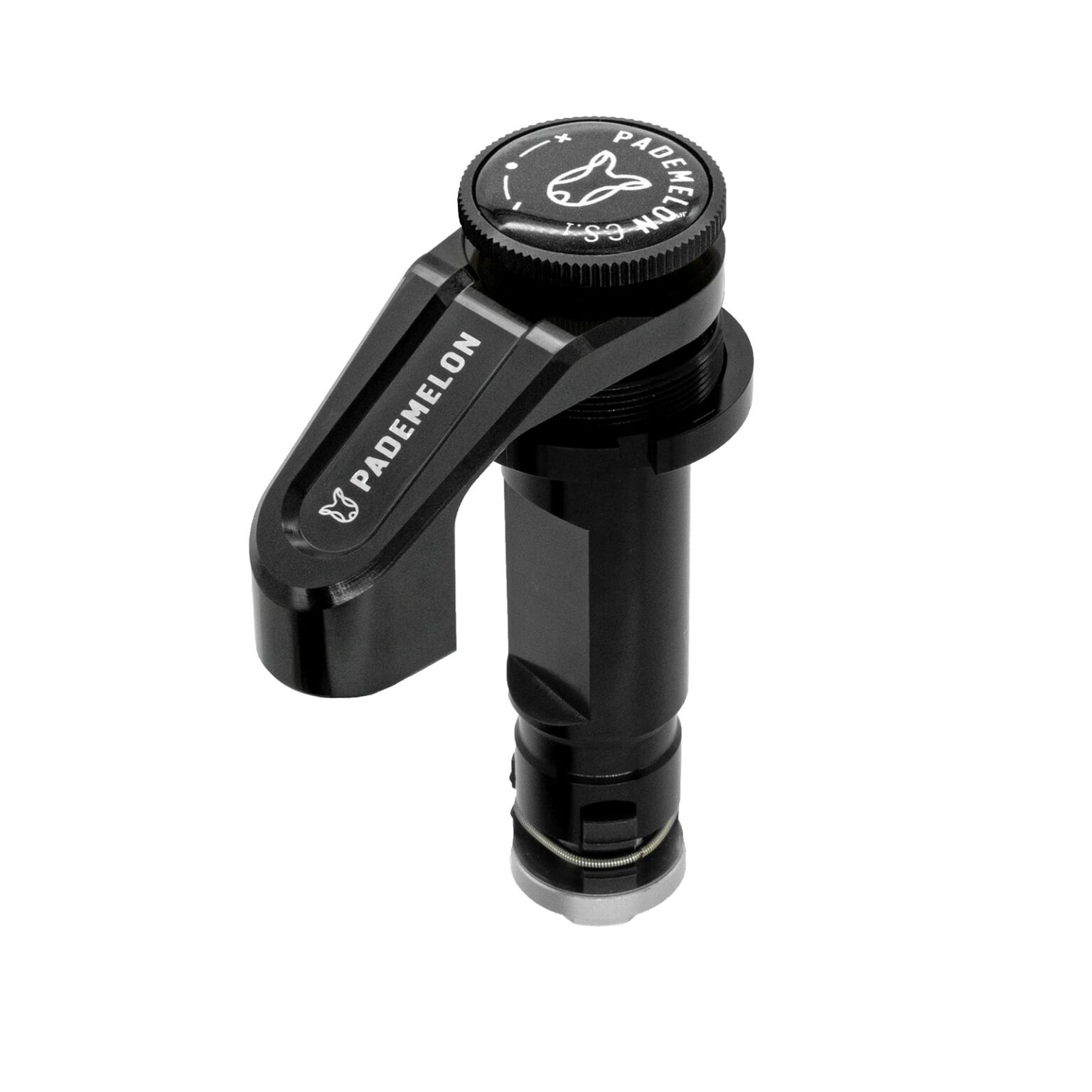
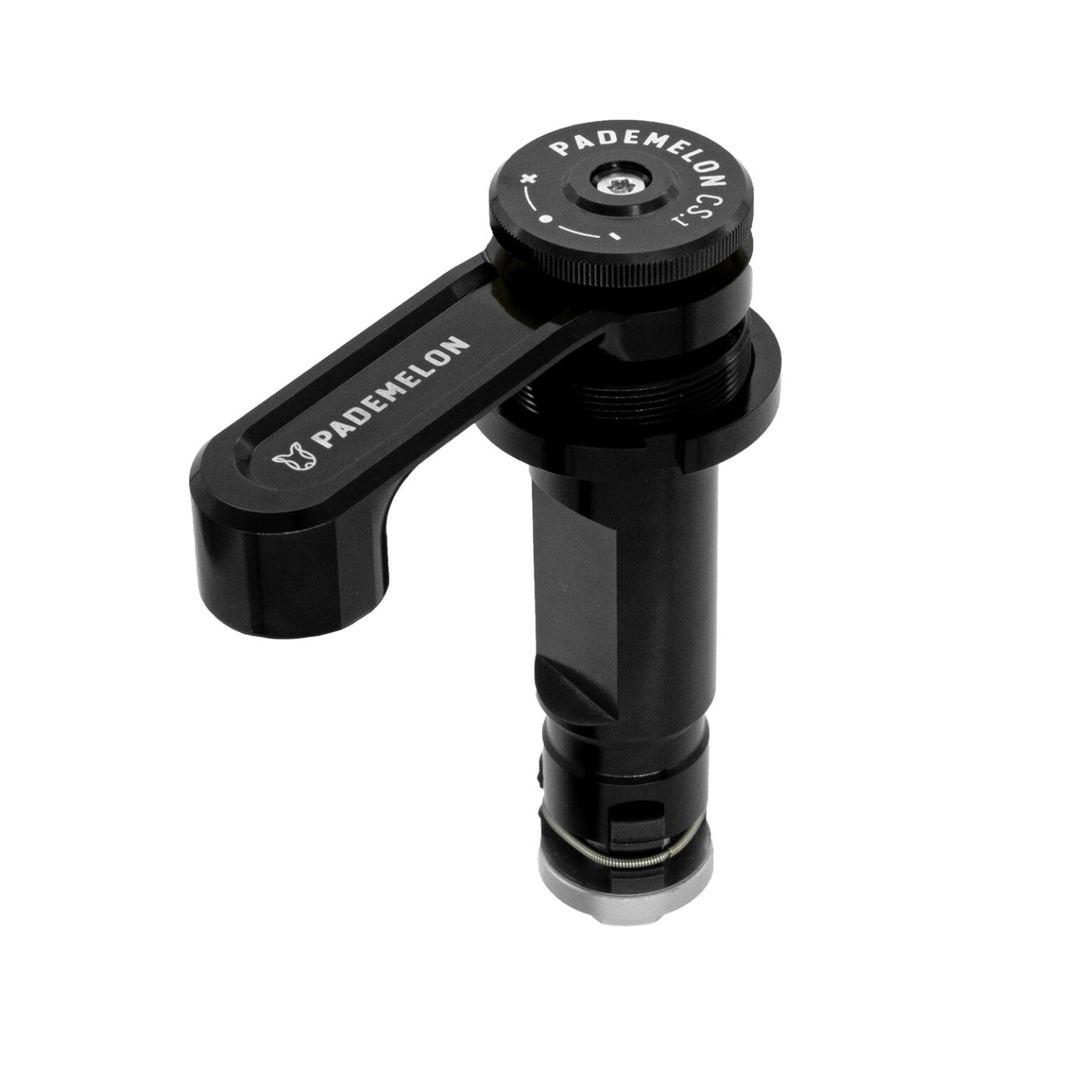
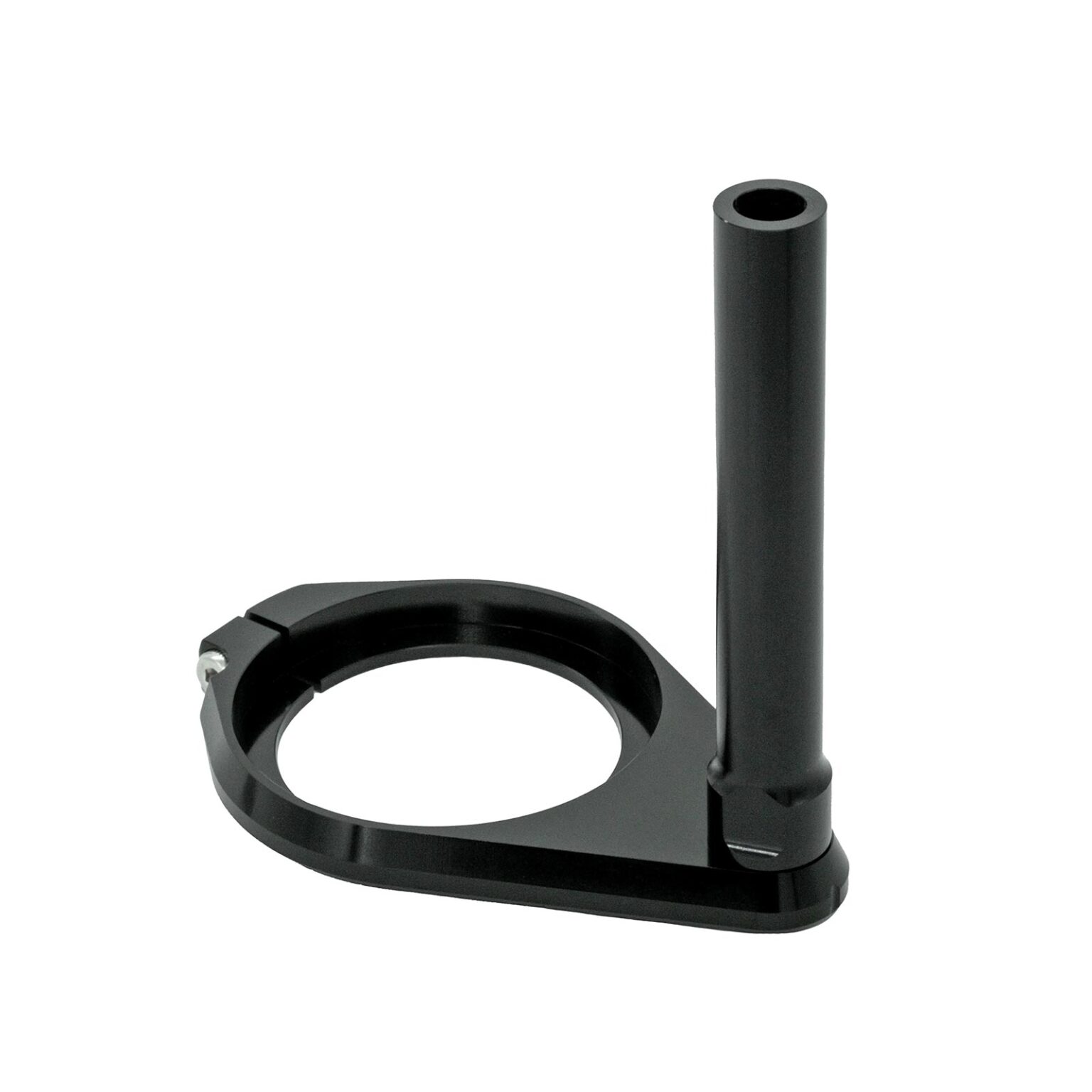
The damper unit itself sells for $541 / 492€ in either a regular single crown or a special dual crown version. Plus it’ll cost you another $108 / 98€ for the mounting kit that fits under your upper headset bearing – in different versions to fit pretty much all headset types and sizes. All Pademelon steering dampers are available now, assembled by hand in Tasmania, and shipped globally.
